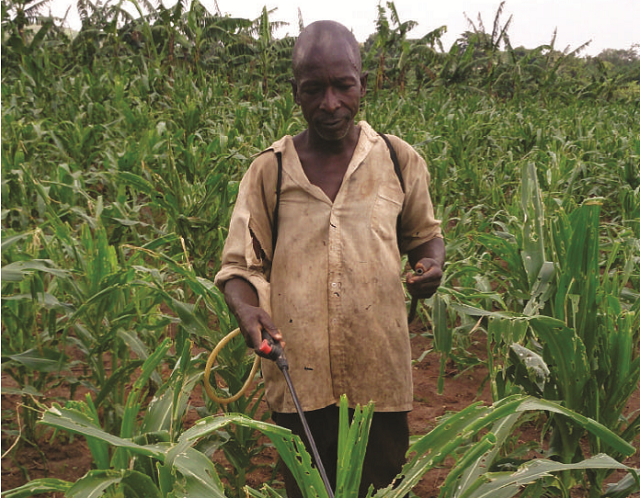
Kampala, Uganda | THE INDEPENDENT | There is a growing level of frustration among maize farmers in Gulu district following the damage of their crop gardens by the invasive Fall Armyworm-FAW. The most affected are farmers in Unyama, Patiko, Bungatira, Awach, Palaro and Cwero Sub counties in Gulu district.
The Fall Armyworm is a pest native to the tropical and subtropical regions of America. The pest has been observed in Uganda feeding on maize; sorghum, sugarcane, rice, cabbages and tomatoes among others.
Martin Otto, a farmer in Paicho Sub County, says the fall army worm infestation has devastated his two acres of maize gardens, saying he expects a very low maize yield.
Evelyn Akot, another farmer in Unyama reveals that she attempted to spray the pest without success. She says the worms have continued destroying her three acre maize garden that she planted in May to raise some income.
Philip Mungu Jakisa, a farmer facilitator advises farmers to reduce chemical use in the management of Fall Armyworm, saying it destroys natural enemies of the worm.
Jakisa advises farmers to adopt techniques like improving soil nutrition, pepper, ash and timely planting as remedial methods of controlling the pest.
Paul Kilama, the acting Gulu District Agriculture Officer, says they have been sensitizing farmers to create awareness about the pest, adding that the district is undertaking disaster risk assessment to ascertain the extent of the damage caused by the pest.
Jackson Lakor, the Gulu District Production Officer notes that such pest infestation has major economic implications in terms of the cost of measures taken at individual level, which affects food security.
Scientific studies show that the moth can move up to 30 kilometers and up to 200 kilometers in a day when assisted by wind. One female fall armyworm can lay 1000 – 1500 eggs during its lifetime.
The National Agricultural Research Organization (NARO) is undertaking the use of biological mechanisms such as wasps, nematodes, and some fungus that attack and destroy the caterpillars. The attempt is aimed at curtailing the use of pesticides in controlling of the pest.
Food and Agriculture Organization – FAO estimated that by mid – 2017, Ugandan farmers had lost between 15 and 85 percent of 450.000 metric tonnes of maize yield due to FAW, an equivalent of over 700 billion Uganda shilling- revenue loss.
FAW is a serious threat to both livelihoods and food security to Ugandans directly affecting a population of 3.6 million people. About four million farmers in the country grow maize, producing four million metric tonnes annually.
*****
URN
 The Independent Uganda: You get the Truth we Pay the Price
The Independent Uganda: You get the Truth we Pay the Price


